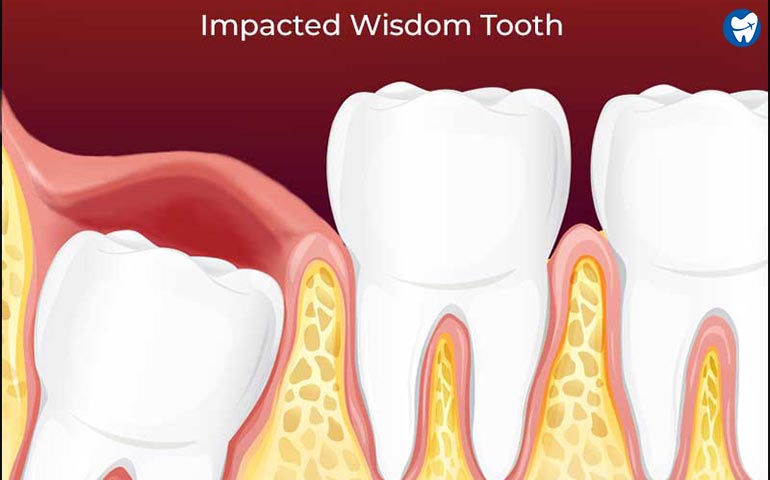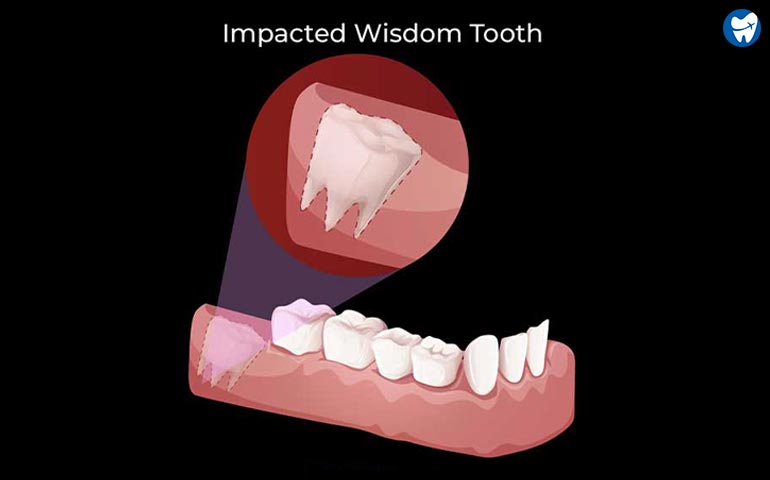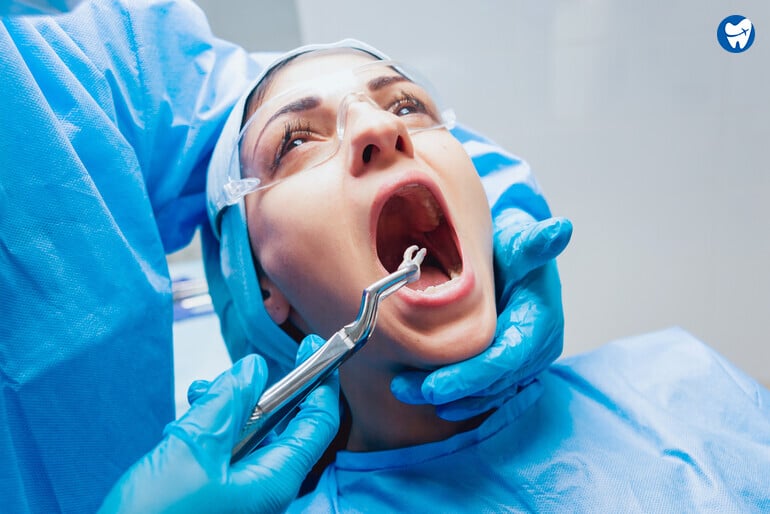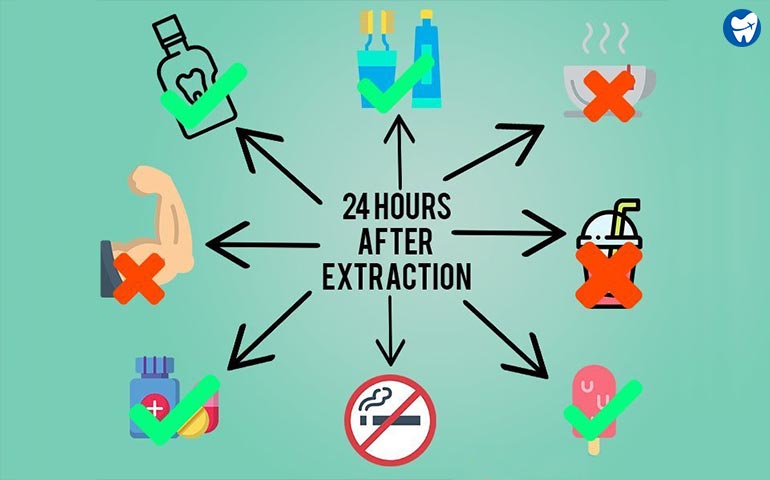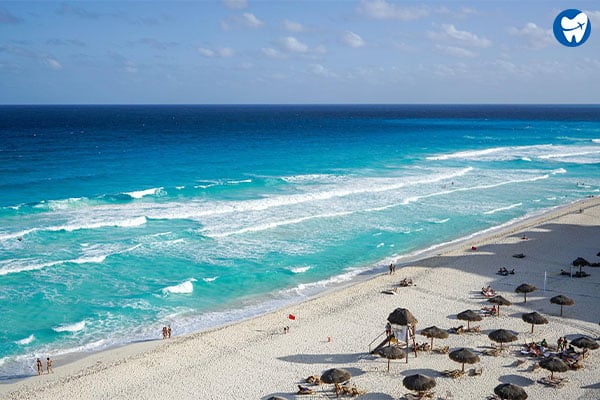What if we tell you getting your teeth extracted without insurance, won’t be a nightmare? Yes! Low-cost teeth extraction abroad can be your savior.
Does it sound unbelievable? Well, the article below is the answer to all your questions. Let’s read further and find out– fair deal?🤝
Infection of the tooth via its surface or through the gums can cause disease inside the tooth.
As the infection travels from the outer to the inner layer, the severity keeps increasing.
If this damage is not stopped in time, it can destroy the tooth structure so much that the tooth needs to be taken out.
The removal of a tooth is called a tooth extraction.
For people who want a more affordable option, getting teeth extractions abroad can be looked into.
Why Do You Need Extraction?
1. Infected Tooth
A tooth can get infected by bacteria which can lead to decay. If the damage is irreparable, by the time the patient comes to the dentist, it will have to be removed.
2. Vertical Root Fracture
If a tooth breaks vertically in the long axis, no solid treatment option can heal it. In such a case, extraction and replacement is the only possible solution.
3. Lack of Gum support
Due to gum disease, the support provided by the fibers surrounding a tooth is lost. These fibers form the Periodontal Ligament or the PDL.
4. Vertical Bone Loss
Teeth are surrounded by alveolar bone on four sides. The vertical pattern of bone loss finishes off one or more of the walls around the tooth.
This causes an increase in the mobility and recession of the gums around this tooth.
In some cases, surgery may help restore bone structure.
However, if the situation is hopeless, then extraction followed by replacement is the best way forward.
5. Full Mouth Extractions
These apply to patients who have only a few teeth remaining in mouth.
If the remaining teeth are unrestorable in some way, the dentist may recommend extraction.
The reason being these teeth will hinder the proper full mouth restoration of the arch.
If these are extracted, a sturdier, permanent solution can be proposed.
6. Broken Natural Tooth Crown
If the natural tooth crown has been completely broken, the roots become open to infections.
It is advised to remove these roots before they become infected and start causing any trouble.
7. Overcrowding or Alignment Issues
Some individuals have misaligned teeth. This might be their natural structure, it might stem from an oral habit or trauma.
In either case, corrections are now possible under the vast umbrella of Orthodontics.
In some cases, the space in the arch is not enough to accommodate all the teeth.
So, one back tooth on each side is strategically extracted. This will help all the other teeth align comfortably.
8. Trauma
At times sudden shock to the teeth might make them lose their vitality or leave them physically damaged or discolored.
For example, a sudden blow to the face or a person falling facedown.
In these cases, if no other treatment option is viable enough, extraction is the treatment of choice.
9. Erupting Teeth
In children with erupting teeth, sometimes the milk tooth or roots preceding it does not shed at the right time.
This stops the permanent tooth from erupting and will further cause faulty alignment of teeth in the future.
Here, an intentional extraction of the retained tooth is done to facilitate the eruption of its successor.
10. Impacted Teeth
Impacted Wisdom Tooth
An impacted tooth is the one not able to erupt into the mouth.
This makes them difficult to extract, which is why they fall under complex or surgical extractions.
This might cause pain and swelling in some cases. A wisdom tooth causing such problems should be removed.
Types of Extractions
A simple elevator and forceps are used to loosen and remove the tooth, painlessly under anesthesia.
Under anesthesia, the gums need to be cut a little to access the tooth and the bone properly.
A small amount of bone may be trimmed to extract all the fragments of the tooth, depending upon the depth of tooth in the jaw.
Such extractions involve special elevators and forceps.
Here only the remaining roots are removed from the socket as the natural tooth crown is missing.
This requires proper elevation since the forceps will not be able to hold onto the roots alone correctly.
How Much do Dental Extractions Cost Abroad?
Simple extraction of a single tooth in the USA can cost $200. In the UK, it can cost upto $495.
The same In Mexico, the cost is a mere $40. In Thailand, simple extraction prices are $25 and in India, it costs $10.
The figures above clearly show if you choose to get teeth extraction abroad you save 80 to 90%.
Given below is the cost of both kinds of single-tooth dental extractions in various countries around the world.
Countrywise Tooth Extraction Prices (USD)
| Country | Simple | Surgical |
|---|---|---|
| United States | $200 | $4,000 |
| United Kingdom | $495 | $2,930 |
| Canada | $150 | $2,000 |
| Australia | $200 | $2,500 |
| New Zealand | $190 | $2,500 |
| Hungary | $60 | $120 |
| Mexico | $40 | $80 |
| Costa Rica | $75 | $100 |
| Thailand | $25 | $60 |
| India | $10 | $30 |
| Turkey | $30 | $55 |
| UAE | $175 | $410 |
*Prices are subject to change.
Is extraction at home plain extortion? Don't worry!
Save ~80% abroad!Why Extractions are Cheaper Abroad
The reasons for the price going down manifold in the dental tourism destinations are:
- The overhead costs in countries like USA, Australia, Canada, and the UK is high. These include employee pays, rental costs, etc.
- The operation costs are very high in larger economies.
- American dentists are under student debt they took in dental school. Also, they have to shell out huge sums in indemnity insurance. This is not the case in dental tourism destinations where education is less expensive.
Affordable dental treatment in these locations can be explored by people without insurance, along with an added advantage of an overseas holiday.
Extractions of Tooth Impactions
Impacted Wisdom Tooth
An impacted tooth is the one which can’t break into the mouth.
This can either be due to its unusual position in the jawbone or some other force stopping it.
Another reason can be a smaller jawbone, which doesn’t have space to accommodate the last tooth.
The wisdom tooth is the most commonly impacted tooth, followed by the canine.
The need for extraction of an impacted tooth arises when it is causing discomfort, pain, or swelling in the patient’s mouth.
The pain can be such that it travels to the ear or the back of the head.
A tooth can either be fully or partially impacted. A fully impacted tooth is completely covered by the bone.
A tooth which is partially erupted and partly inside the jawbone is a partial impaction. It may also be covered only by the gums.
In this condition, the gums around the area will swell up, and the patient will experience much pain.
Other symptoms might include pain on opening the mouth, ear pain, headache due to swelling or a sour taste in the back of the mouth.
Extraction of an impacted tooth is a surgical procedure. The various steps are explained below:
Consultation
A consultation involves physical examination, CT Scans, and X-rays.
These help the dental surgeon decide the treatment plan.
Anesthesia
The first step is administering anesthesia.
After surface anesthesia, the jaw of one side is numbed so that the patient is comfortable during the procedure.
Other options like conscious sedation are also available for extremely anxious patients.
This will put you in a sleep-like state where you won’t feel any pain.
Sleep sedation puts you in a state between local and general anesthesia.
It is completely safe in-office procedure which is done routinely.
Incision
An incision is made in the gums overlying the impacted tooth. A flap is usually raised to establish access to the area in question.
Drilling
The next step is to remove a little jawbone so that instruments can reach the tooth.
Once the tooth is completely exposed, we proceed to the actual extraction part.
Sectioning and Extraction
On visualizing the tooth, the dentist decides if the tooth can be taken out all at once.
If this can’t be done, sectioning of the tooth is performed.
This means that the tooth is cut into smaller sections. Each section of the tooth is removed individually.
Irrigation and Disinfection
After all the pieces are taken out, the cavity is irrigated with saline and antibiotic solution.
This will prevent the precipitation of any further infections.
Suturing
If the cavity remaining after extraction is extremely large, the dentist might fill it with a bone graft to facilitate bone formation.
But in case the cavity is small, the gums are sutured back up directly.
Extraction of Tooth
Post Tooth Extraction Instructions
- After tooth removal, a blood clot forms in the socket. This clot initiates the healing process in the extraction site.
- The patient is advised to refrain from blowing their nose, sneezing or spitting out for at least 24 hrs. Pressure is maintained over the extraction socket for 30-40 mins.
In case the clot is disturbed after extraction, a condition called dry socket occurs. The bone becomes exposed to the mouth environment.
This is a painful situation, where the pain starts 2-3 days after the extraction. Help should be sought immediately.
If ignored, this can lead to severe complications.
Post Extraction Care
Once the clot stabilized, the healing process will continue spontaneously.
- In case the extraction site has been sutured, the wound should be kept clean at all times. Mouthwash can be used for the same.
- Even if you are brushing your teeth, the extraction site should not be touched. To clean it, most dentists advice using your finger with mild pressure. Vigorous brushing is to be avoided.
- Immediately after the surgery, do not consume anything hot or warm. Spicy foods are also to be avoided.
- For at least 24 hours, drink cold beverages or have soft cold foods. For example, your dentist might tell you to consume a plain ice cream (without any nuts or chocolate chips).
- The use of straws is best avoided for 24 hours post extraction. Sucking leads to negative pressure build-up, thereby destabilizing the clot.
- Similarly, smoking is avoided for 48 hours.
- Strenuous activity or exercises are avoided for 48 hours after extraction.
- Patients who have underlying medical conditions, such as diabetes or hypertension, need to be a little more cautious.
- People with diabetes are at a higher risk of infection. Healing takes longer in diabetics.
- Post-op antibiotics prescribed should be duly taken and hygiene maintained.
- If you are taking any blood-thinning medicine, you might be asked to stop taking it for a few days before and after the procedure, depending upon your medical condition as well as the procedure you undergo.
- Written medical advice may be sought in a few cases.
Click here to know more about the “Post Extraction Instructions and Aftercare”
Treatment Options After Tooth Extraction
Treatment options will depend on the number of missing teeth.
If there is a single tooth missing, a single unit dental implant might be the best way forward. This, in turn, depends on the amount of bone available.
The other option is to get dental bridges or removable dentures depending on one’s budget as well as requirements.
In case all your teeth have been extracted, there are a variety of treatment options to choose from.
For example, we have the All-on-4 or All-on 6 system. Only four to six implants per arch will support the whole set of teeth! Also, these can be done in one sitting!
Some patients might prefer to go for the traditional option of removable complete dentures.
However, due to the many disadvantages, dentists don’t recommend this treatment anymore.
We facilitate quality yet low-cost tooth extractions abroad at renowned dental clinics.
Your treatment will be performed by highly accomplished dental professionals.
Top 5 Countries for Low-cost Teeth Extractions Abroad
Dental tourism has been on the rise for low-cost healthcare for those without insurance.
The bigger question that arises is where can you take a trip to maximize your cost benefits.
We are partnered with 22+ hand-picked countries to offer you quality healthcare at affordable prices.
Check out the top 5 countries you can visit for low-cost teeth extractions overseas!
Mexico is a favorite amongst medical tourists worldwide.
This is substantiated by the fact that 1.2 million tourists travel from different parts of the world to travel to Mexico for health purposes.
Hence, it has secured the position of the 2nd most traveled medical tourism destination. [1]
Mexico for teeth extraction
You can save a whopping 60-90% on dental work in Mexico compared to the US.
To know the dental tourism prices for your specific treatment, explore the top 10 dental clinics and dentists in Mexico.
“Euro Monitor” carried out a survey on dental and plastic surgery work in Costa Rica.
As per the study, 90% of dental work is performed on foreigners in hospitals of Costa Rica.
The low cost and high efficiency of dental procedures are one of the main reasons for the popularity of Costa Rica. [2]
Costa Rica for low-cost tooth extraction
Dental work in Costa Rica costs about one-third of that in the US.
For further details, check out our blog 'Top 10 dental clinics and dentists in Costa Rica.'
For a long time, Thailand has been a popular destination for tourists.
Thailand’s heritage and culture set it apart from all other Southeast Asian countries.
Bangkok is currently one of the world’s most popular places to visit.
Every year, a large number of tourists explore the city, making it a great tourist destination.
Thailand for low-cost tooth extraction
The town is surrounded by numerous intriguing regions, all of which are incredibly attractive and have their fascinating heritage.
Choosing dental tourism in Thailand lets you blend tourist wonders with cost-effective treatments, about 60% less than in the US and Australia.
Delve into our blog, 'Top Dental Clinics and Dentists in Thailand,' for insights into treatment costs.
Despite the global economic slump, medical tourism in India has appeared among the quickest developing categories of the tourism industry.
The high expense of therapies in industrial countries, especially the US and the UK, has driven patients from these countries to seek other and cheaper treatment options.
India for low-cost teeth extraction
Dental work in India cost 60-70% less than in Canada, US and Australia.
Explore further by delving into our list of the top 10 dental clinics and dentists in India.
Turkey is a well-known location for dental tourism.
Local dentists can alter the appearance of teeth by applying components that exactly replicate the form and color of genuine teeth. [4]
This implies anyone can have a million-dollar smile at a lesser price.
Turkey for low-cost teeth extraction abroad
Dental work in Turkey saves 70% compared to prices in the UK and other European countries.
Check our blog post, "Top 10 Dental Clinics and Dentists in Turkey," for more details.
Conclusion
Are you intrigued by the information? Want to book your low-cost teeth extraction abroad?
The difference between endless research and instant result is Dentavacation.
FAQs
Yes, having a tooth extracted may be painful.
However, your dentist will usually administer local anesthesia throughout the treatment to alleviate any discomfort.
In addition, dentists suggest over-the-counter (OTC) or prescriptions to assist you to manage the discomfort after the treatment.
Surgical tooth extraction in Dubai will cost you USD 410. Whereas the same would cost you USD 2,000 in the US and USD 2,930 in the UK.
After comparing the prices above it’s very clear that you can save 80 – 85% costs. Which indeed is a big difference.
Simple tooth extraction in India costs starts from USD 10. But for the same treatment costs USD 200 in the US and USD 495 in the UK.
You can the benefits of low-cost teeth extraction abroad by choosing India. You can save costs more than 85 to 90% on your treatments.
